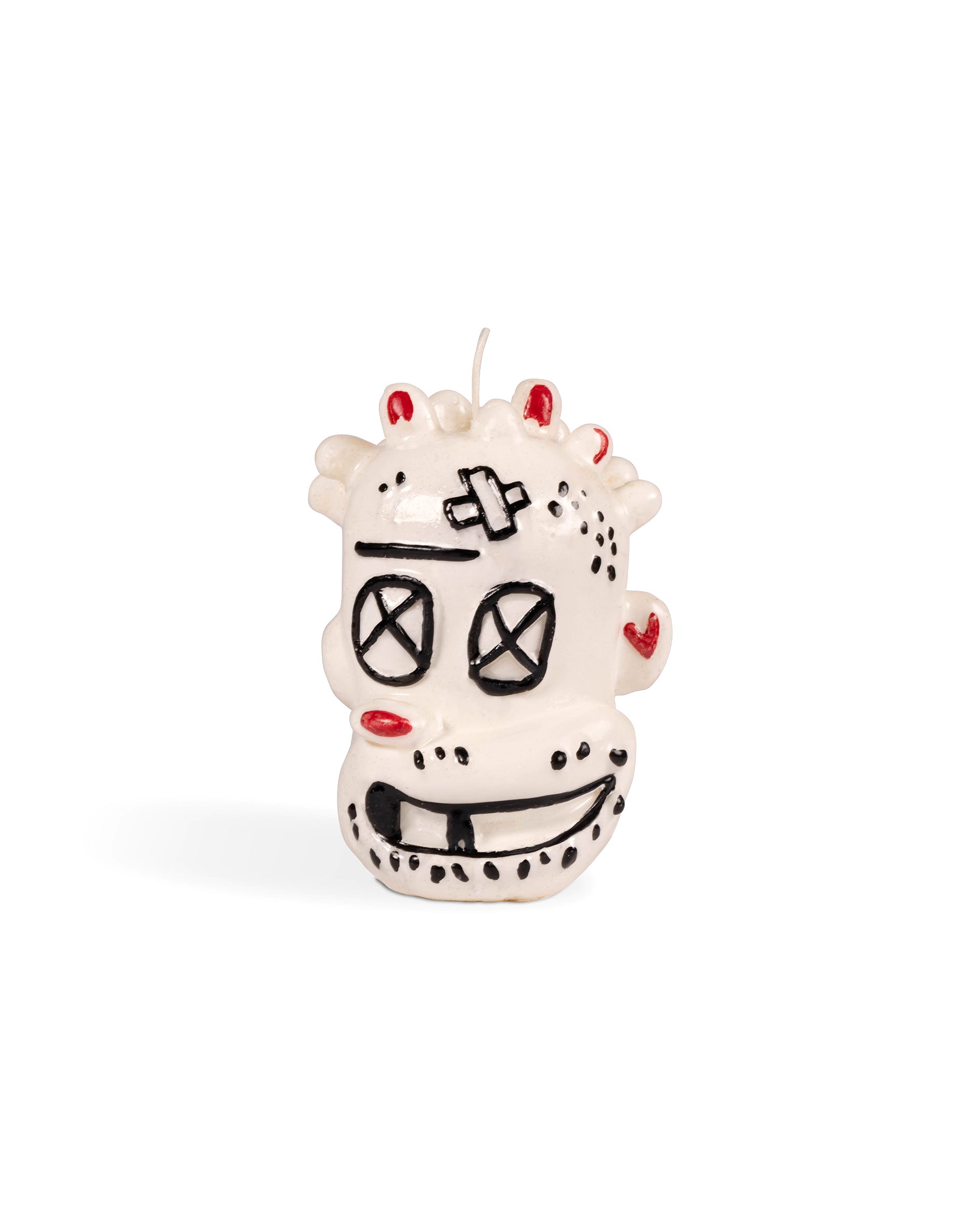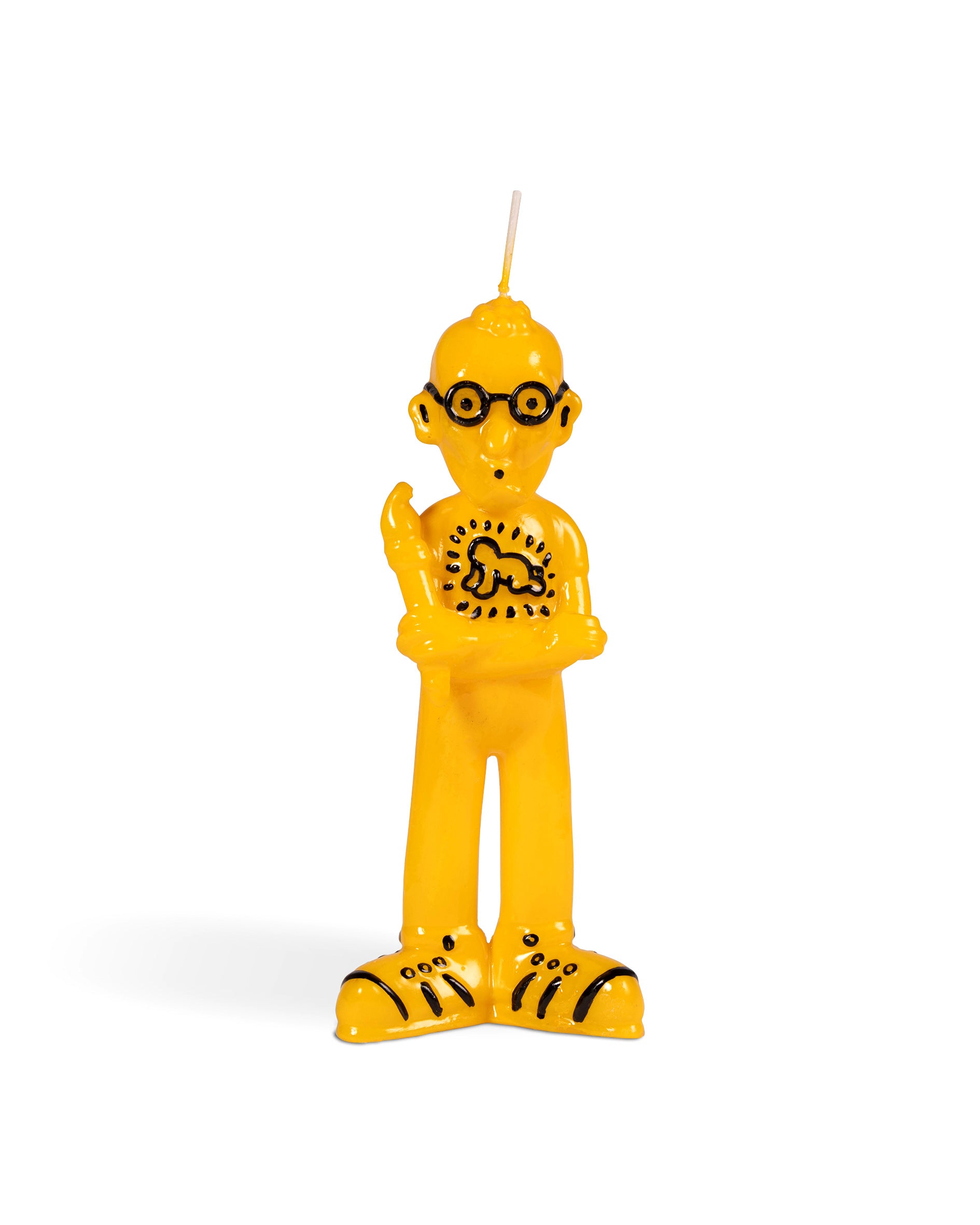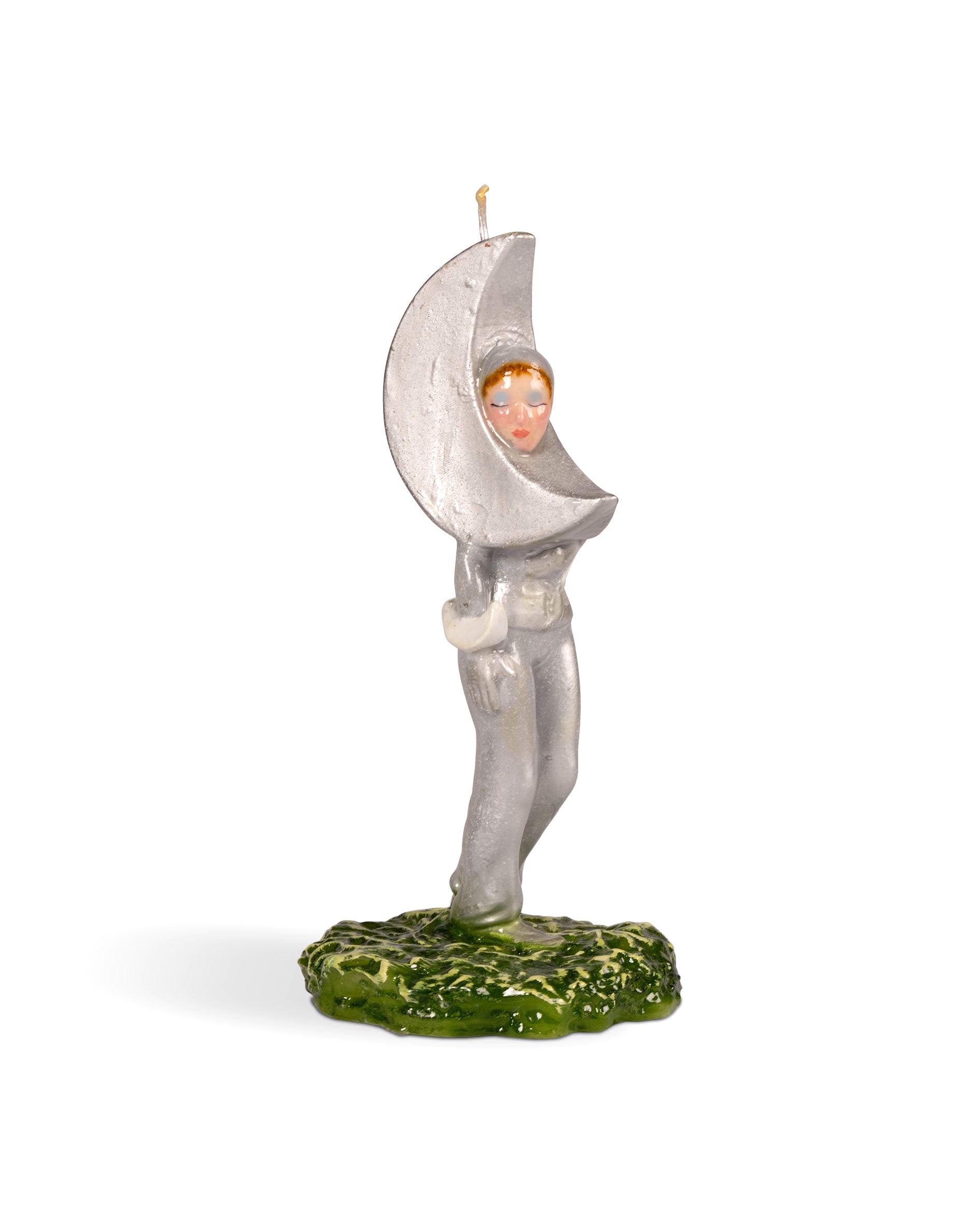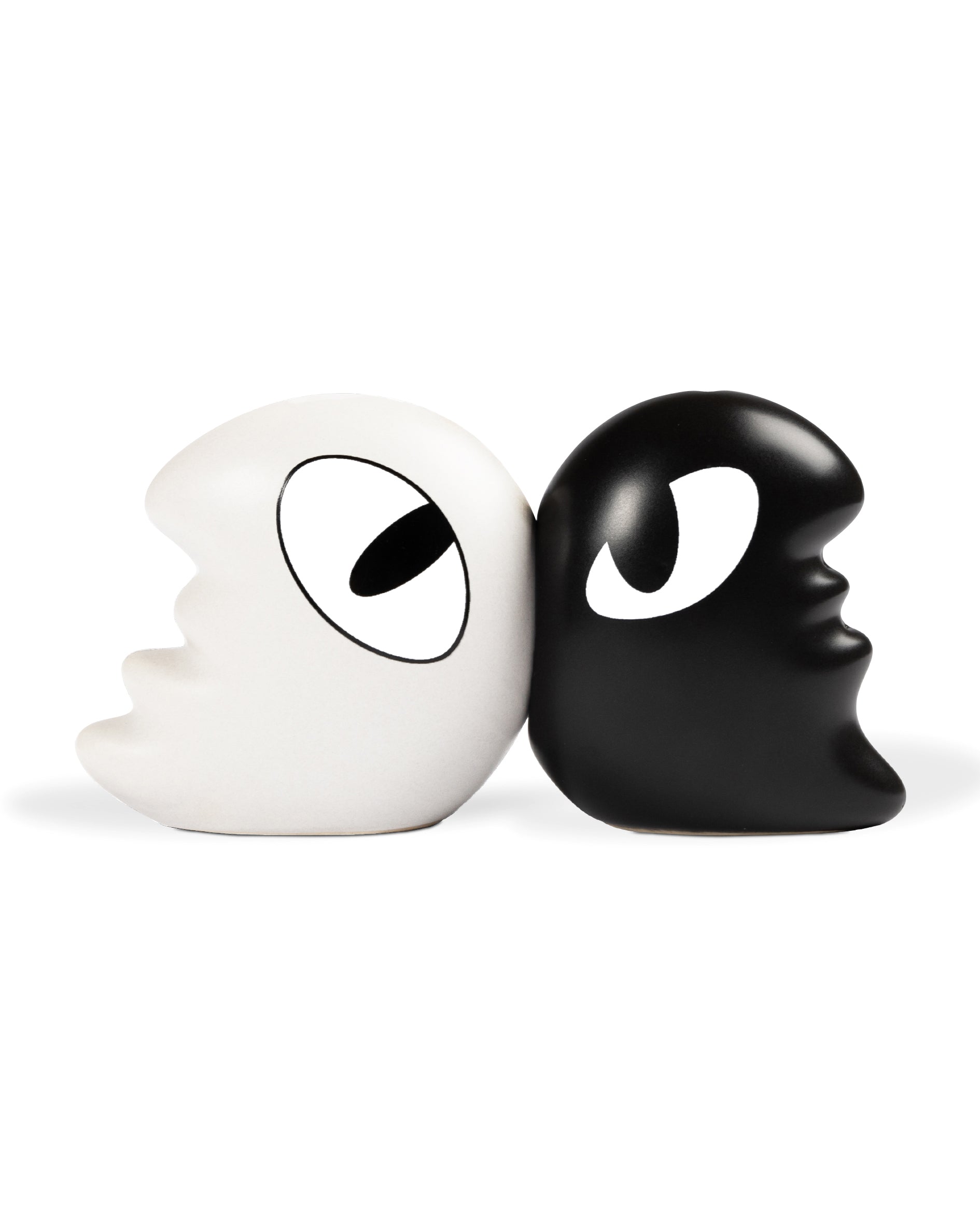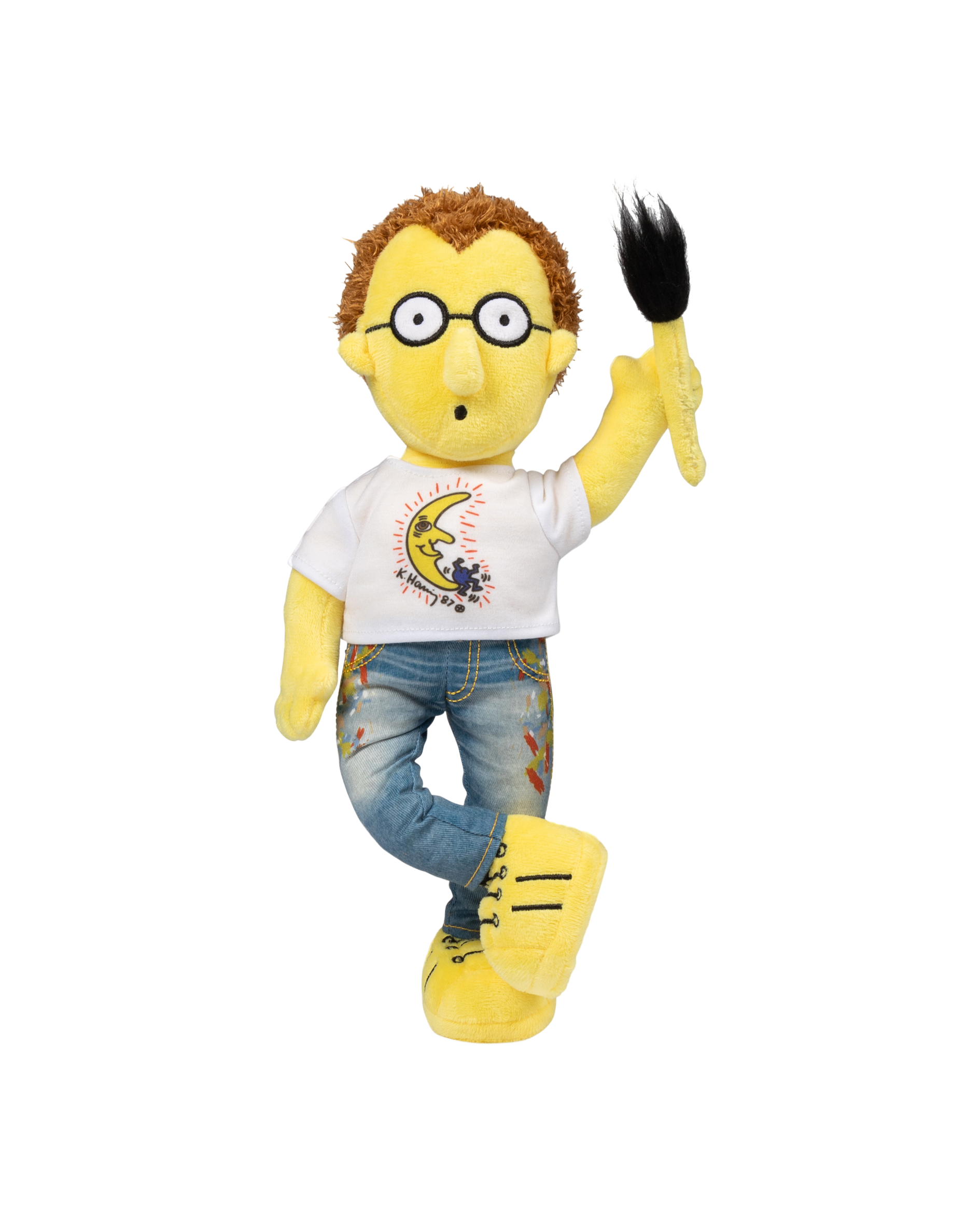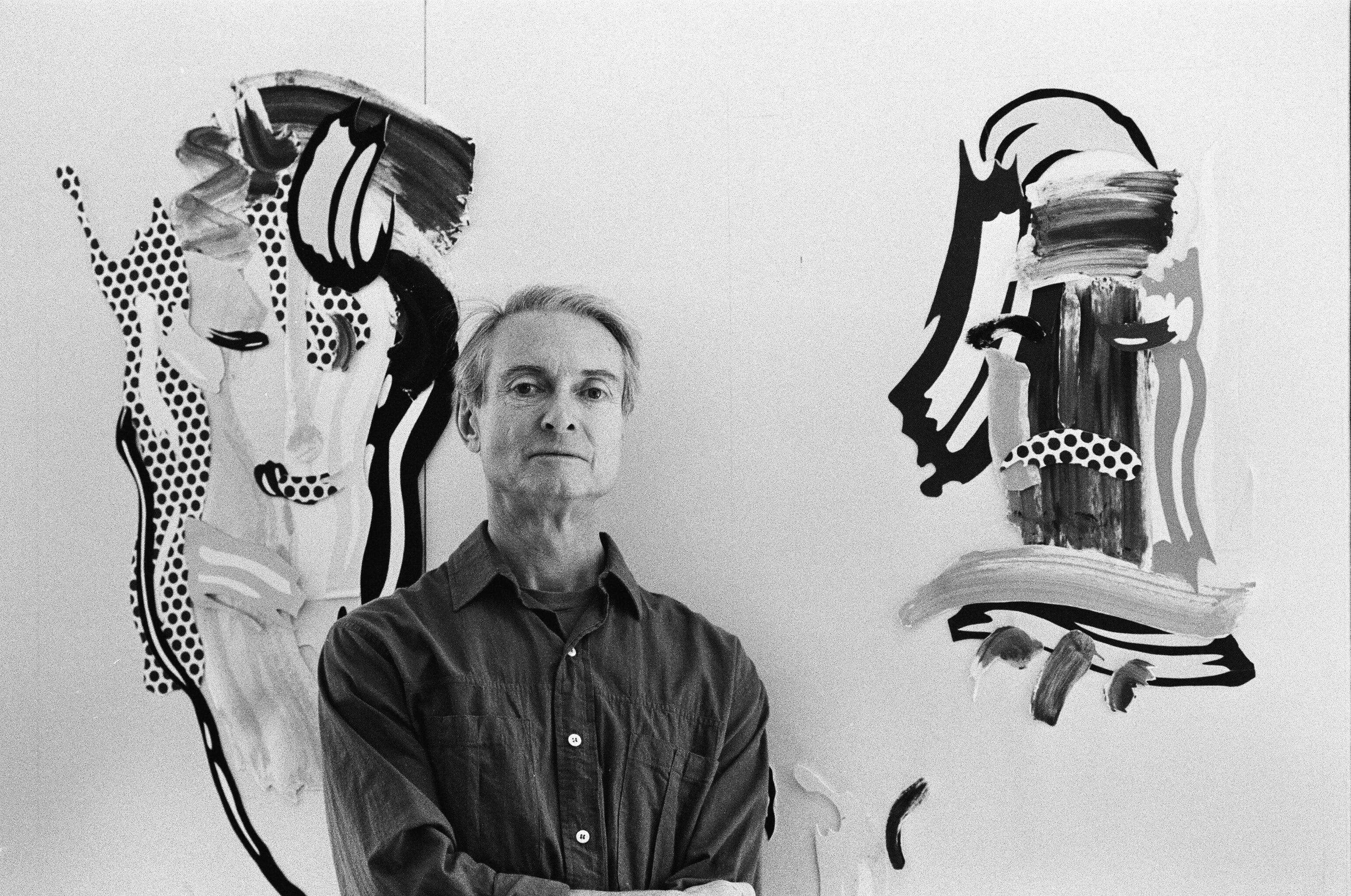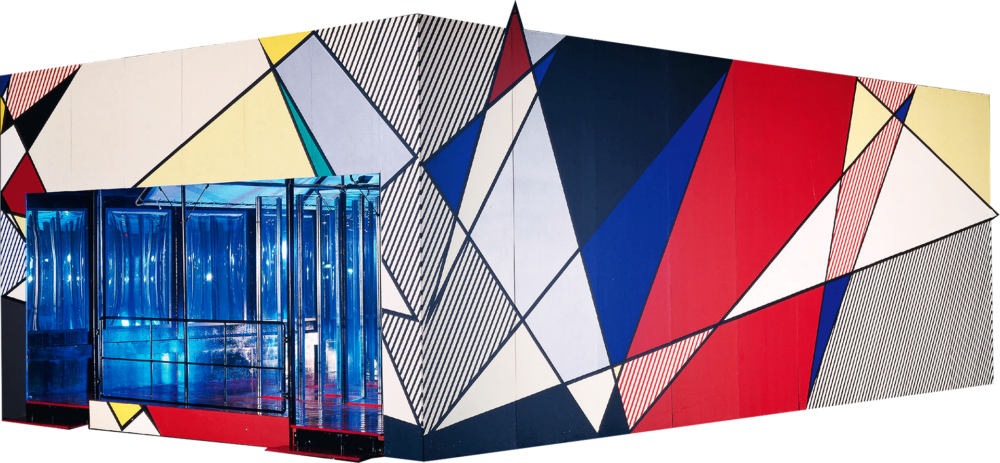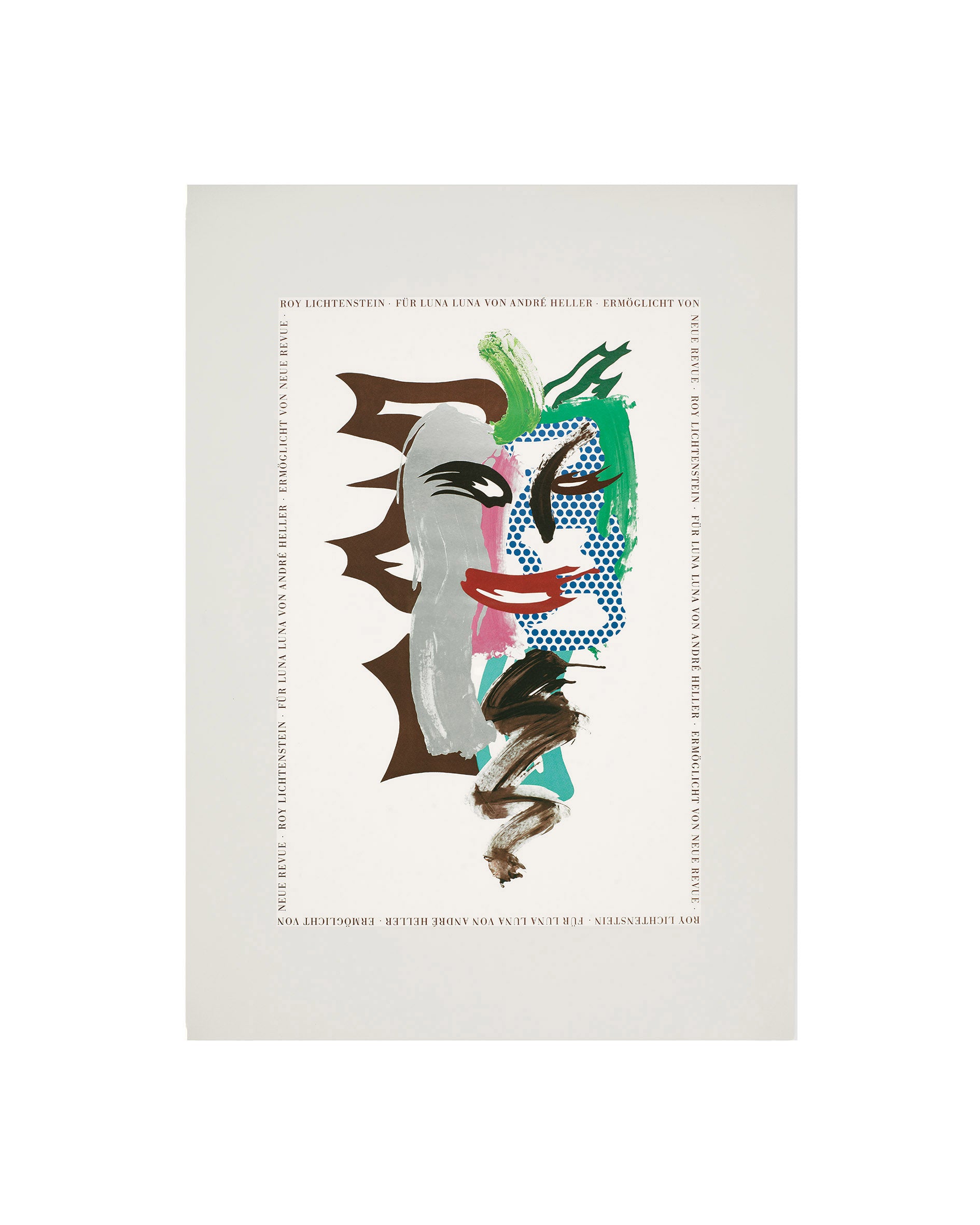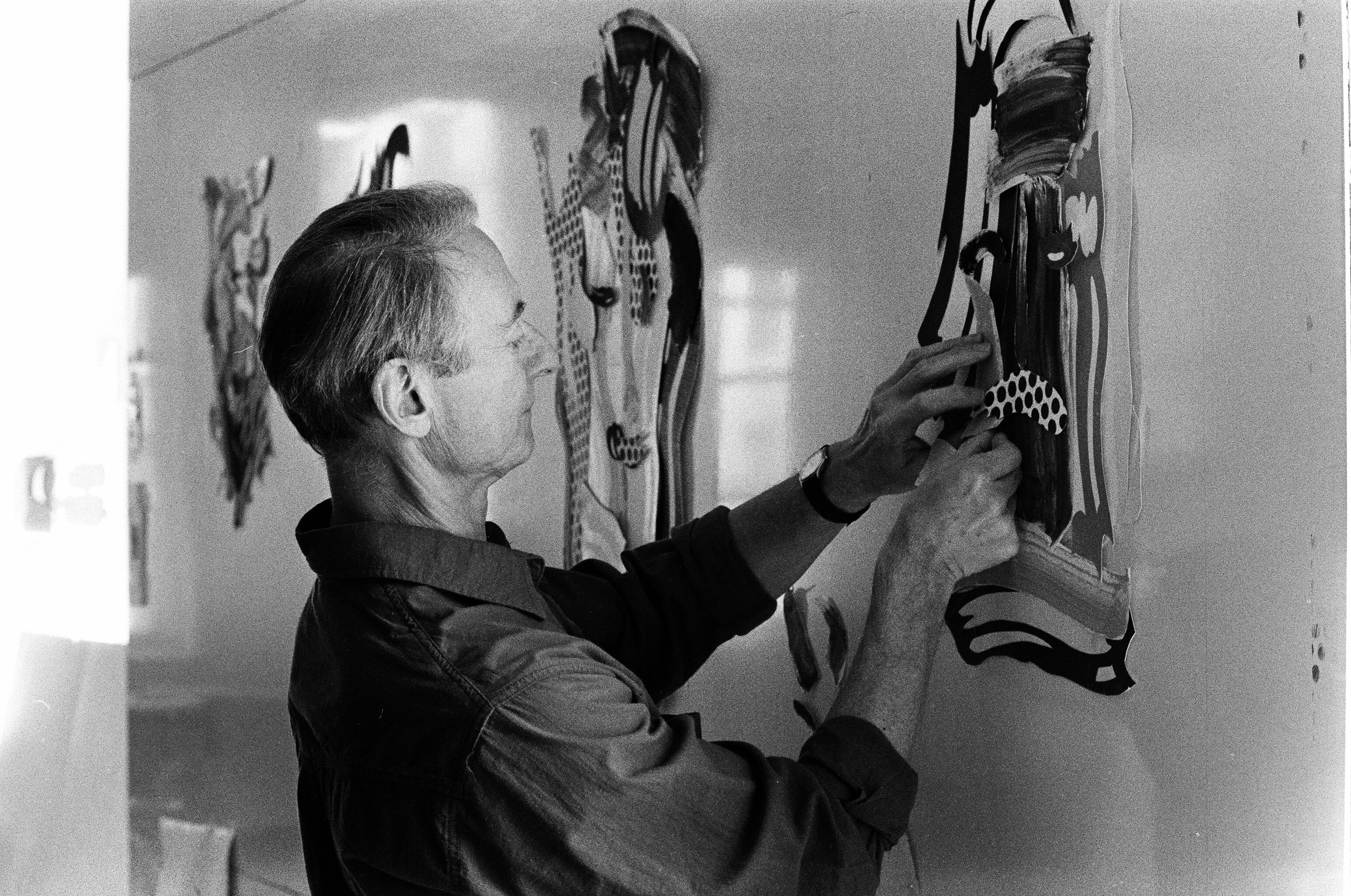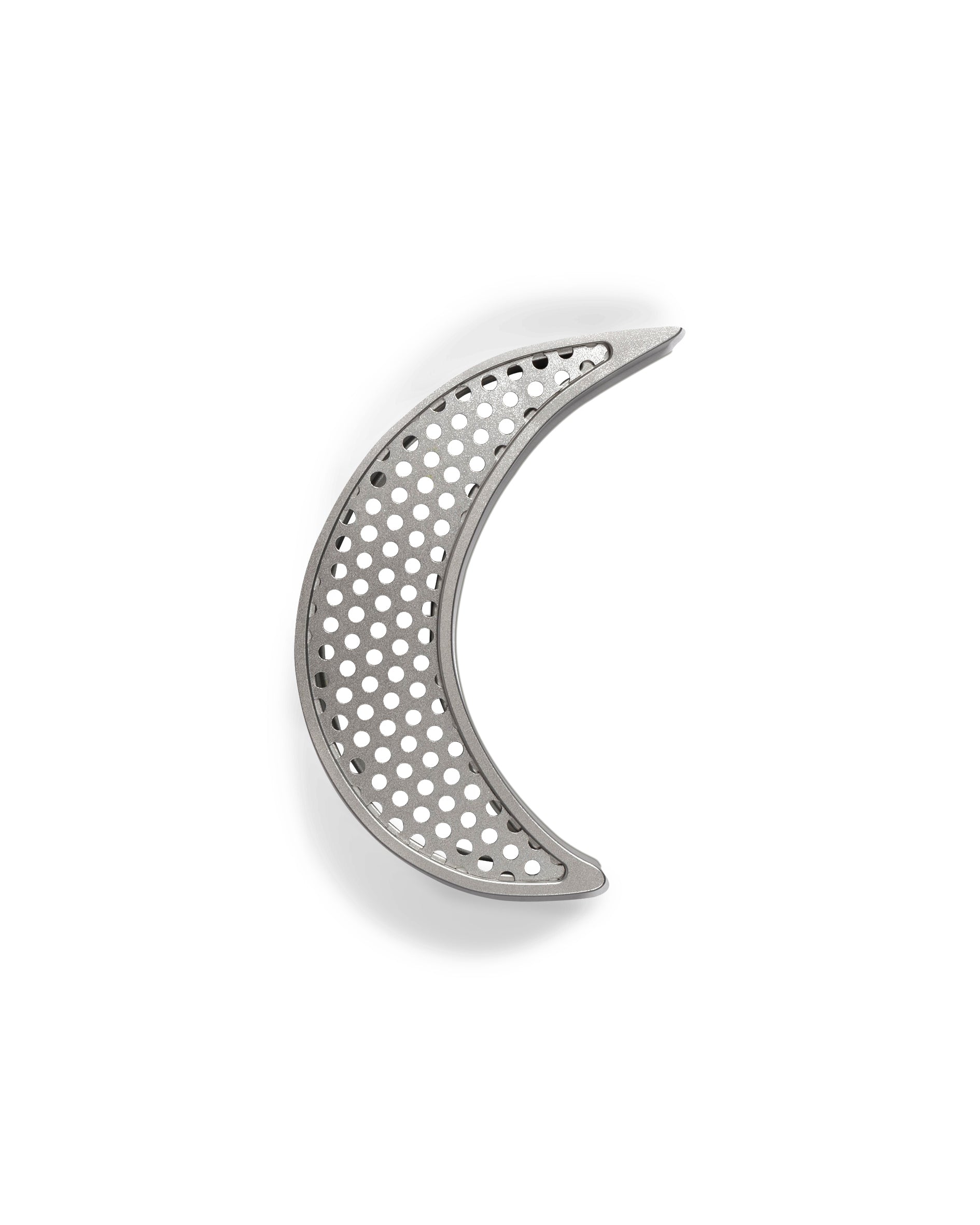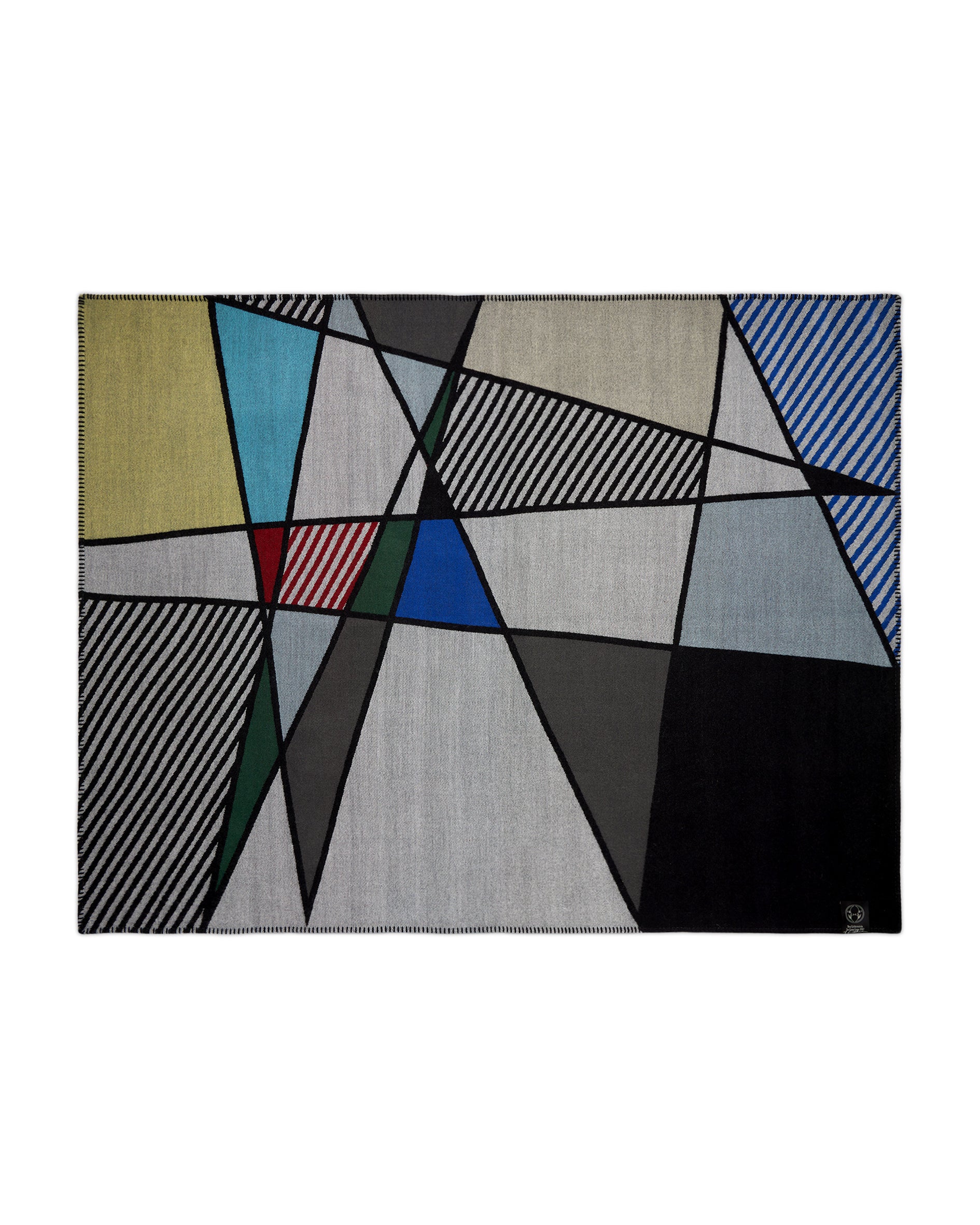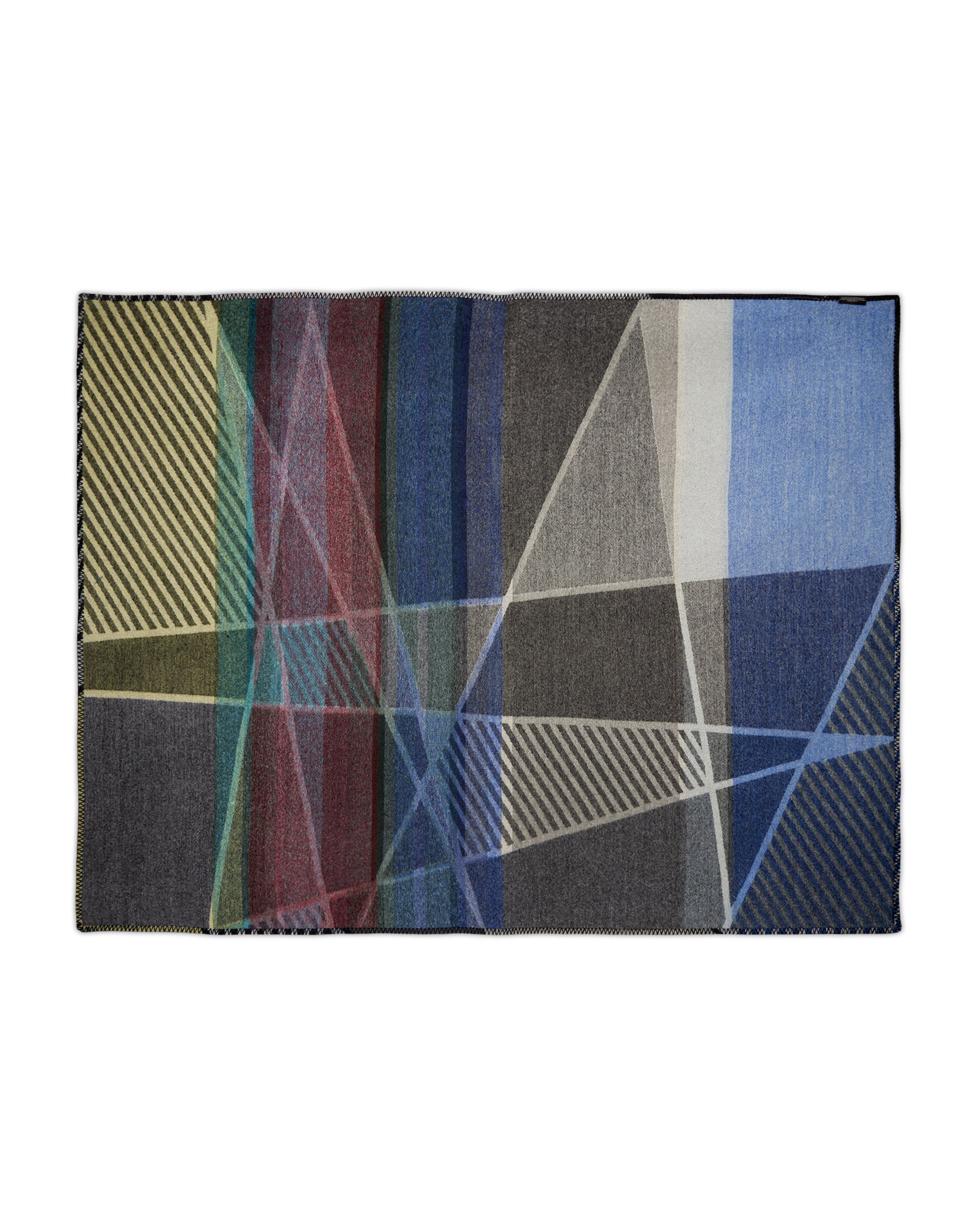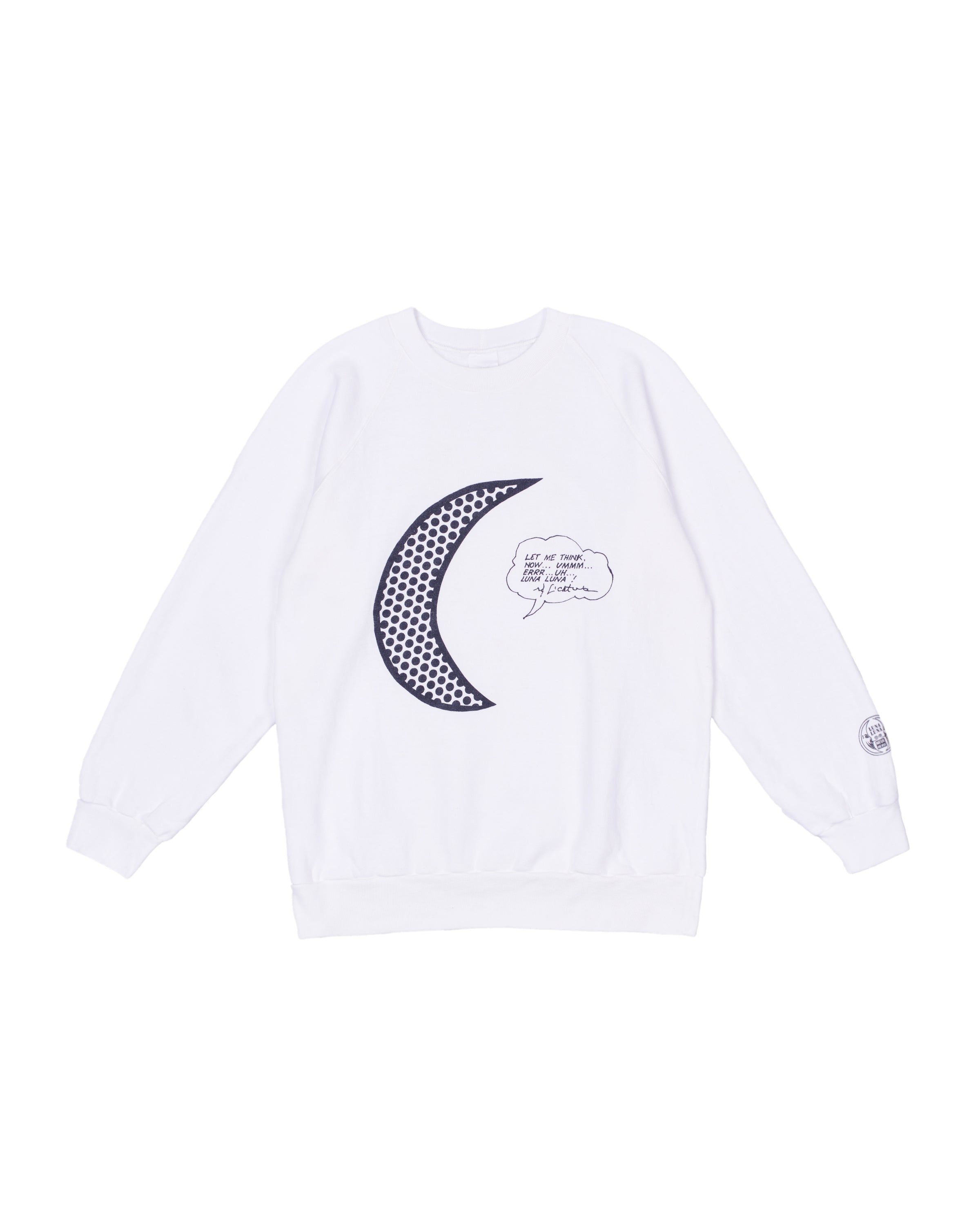For Luna Luna, Lichtenstein contributed exterior panels for a glass labyrinth in style with his 1985 "Perfect/Imperfect" series.
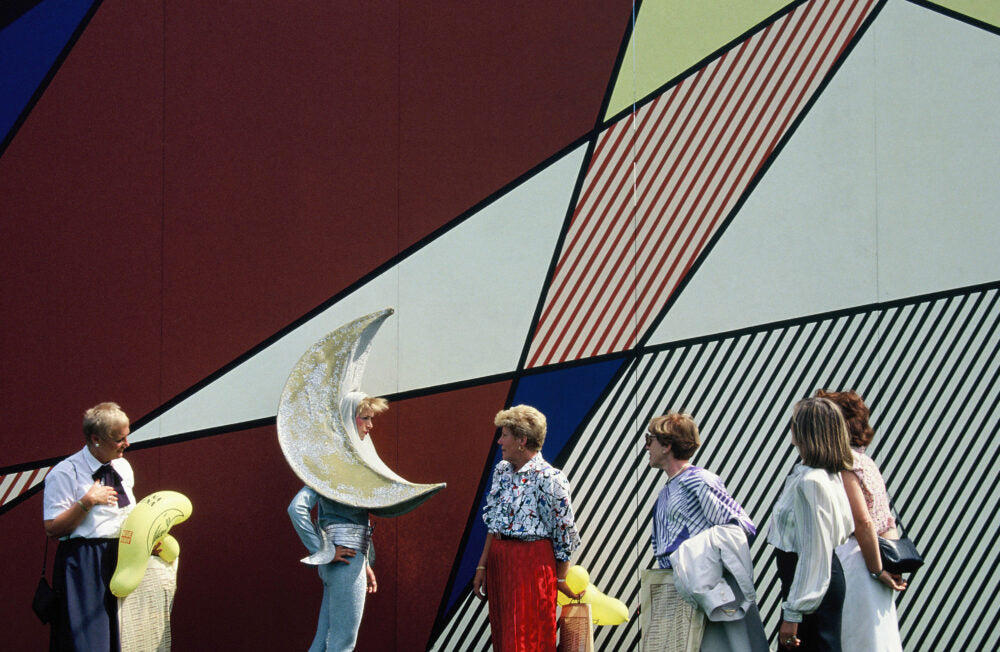
Fairground view: Roy Lichtenstein, Luna Luna Pavilion. Luna Luna, Hamburg, Germany, 1987.
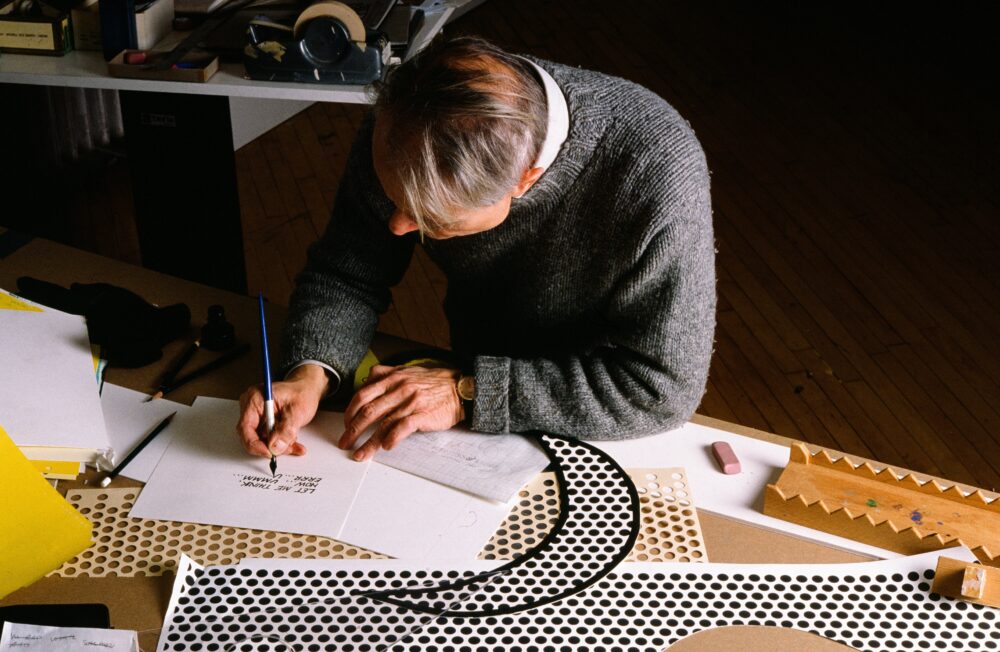
Roy Lichtenstein.
One of the most celebrated artists of the twentieth century, Roy Lichtenstein made paintings and prints based on found imagery—such as the covers of generic romance books, war comics, and advertisements, as well as architecture, design, and art historical sources—treating all images, high or low, equally. Lichtenstein was a leading figure in establishing the Pop Art movement in 1960s New York, alongside artists such as Claes Oldenburg, Andy Warhol, and Jasper Johns.
Lichtenstein was a leading figure in establishing the Pop Art movement in 1960s New York, alongside artists such as Claes Oldenburg, Andy Warhol, and Jasper Johns.
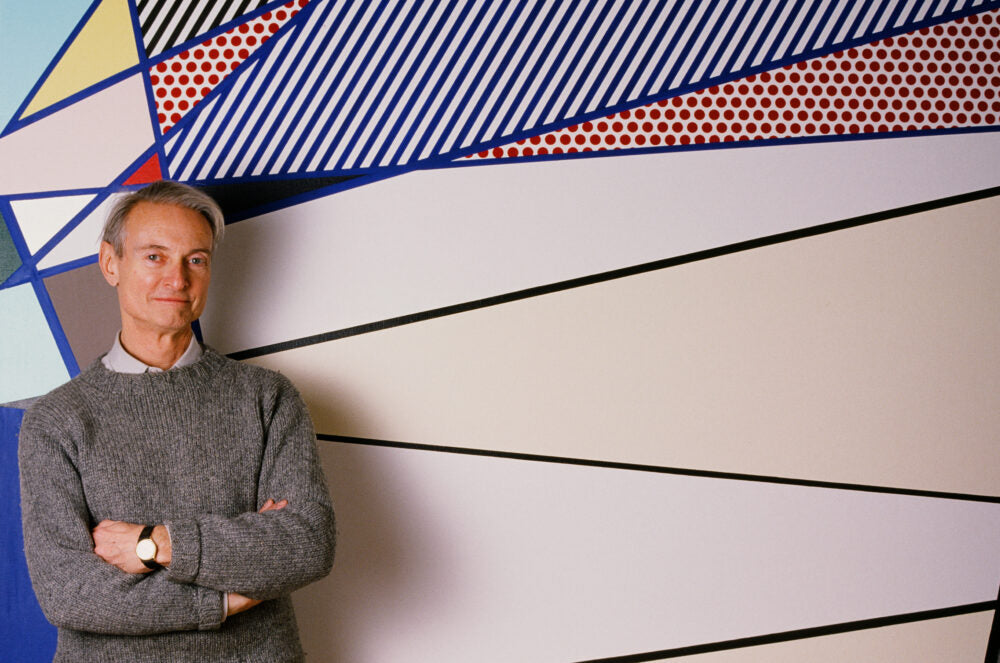
Roy Lichtenstein, Luna Luna Pavilion, exhibited 1987.
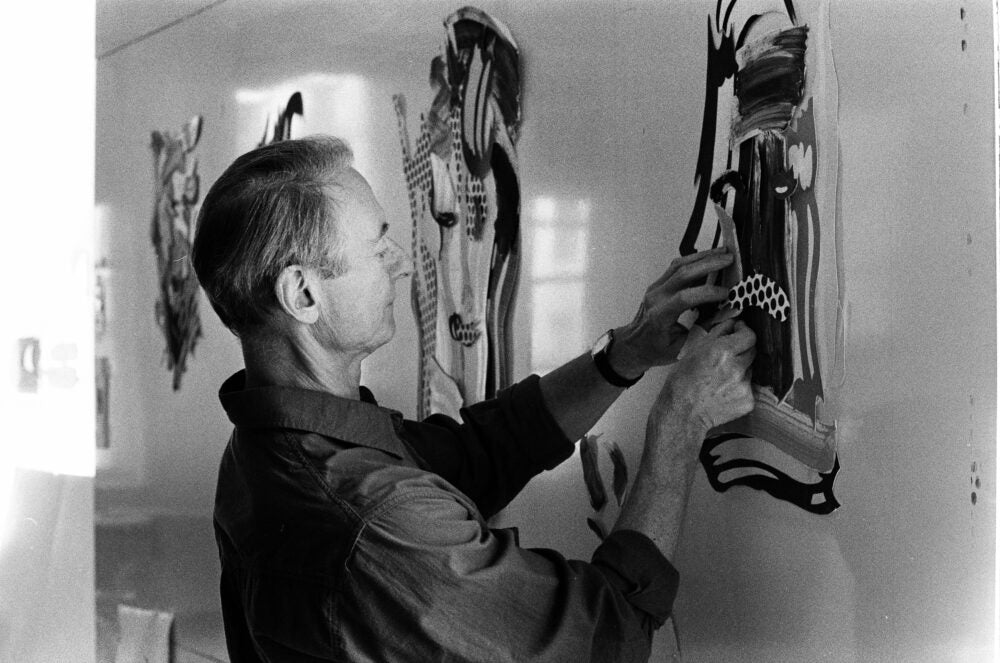
Roy Lichtenstein.
Mimicking the mechanical production of comic books, Lichtenstein transferred the source image to canvas with a projector and reproduced it with paint using Ben-Day dots—the method used by newspapers and comic strips to denote gradients and texture, reducing the color palette to highly saturated primary colors and heightening the contrast. His inaugural Pop work, Look Mickey (1961), borrows a scene from the Disney children’s book, Donald Duck: Lost and Found (1960), replicating its primary colors, heavy black outlines, and bubble text with what became an instantly recognizable visual language.
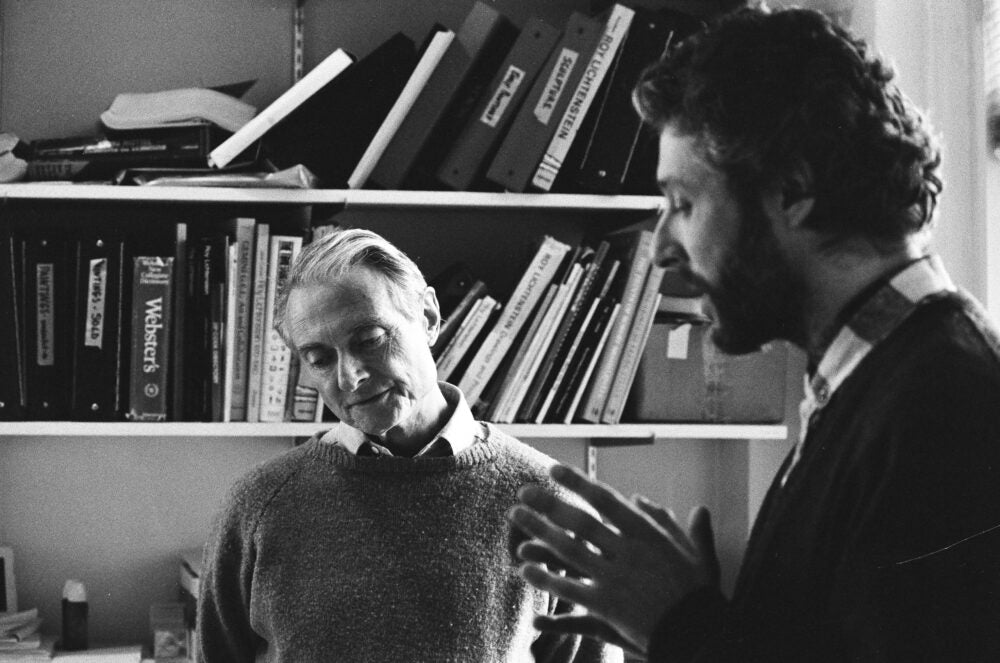
Roy Lichtenstein, André Heller.
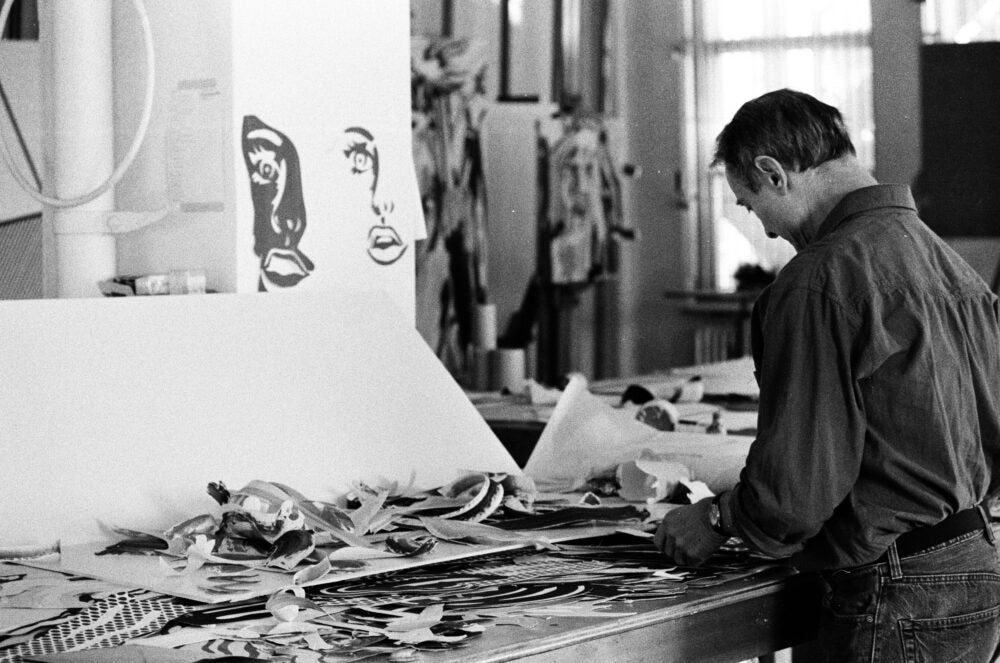
Roy Lichtenstein.
While he retained a lifelong interest in mass media, Lichtenstein abandoned working with comics in the mid-1960s, choosing to reflect on art history. Lichtenstein began his “Perfect Painting” series in 1985, creating a radical series of abstract compositions that used a single black line to self-generate geometric planes. The resulting paintings use intersecting triangles, black diagonal lines, signature dots, and flat planes of primary colors to experiment with and parody the visual and spatial boundaries of the two-dimensional plane.
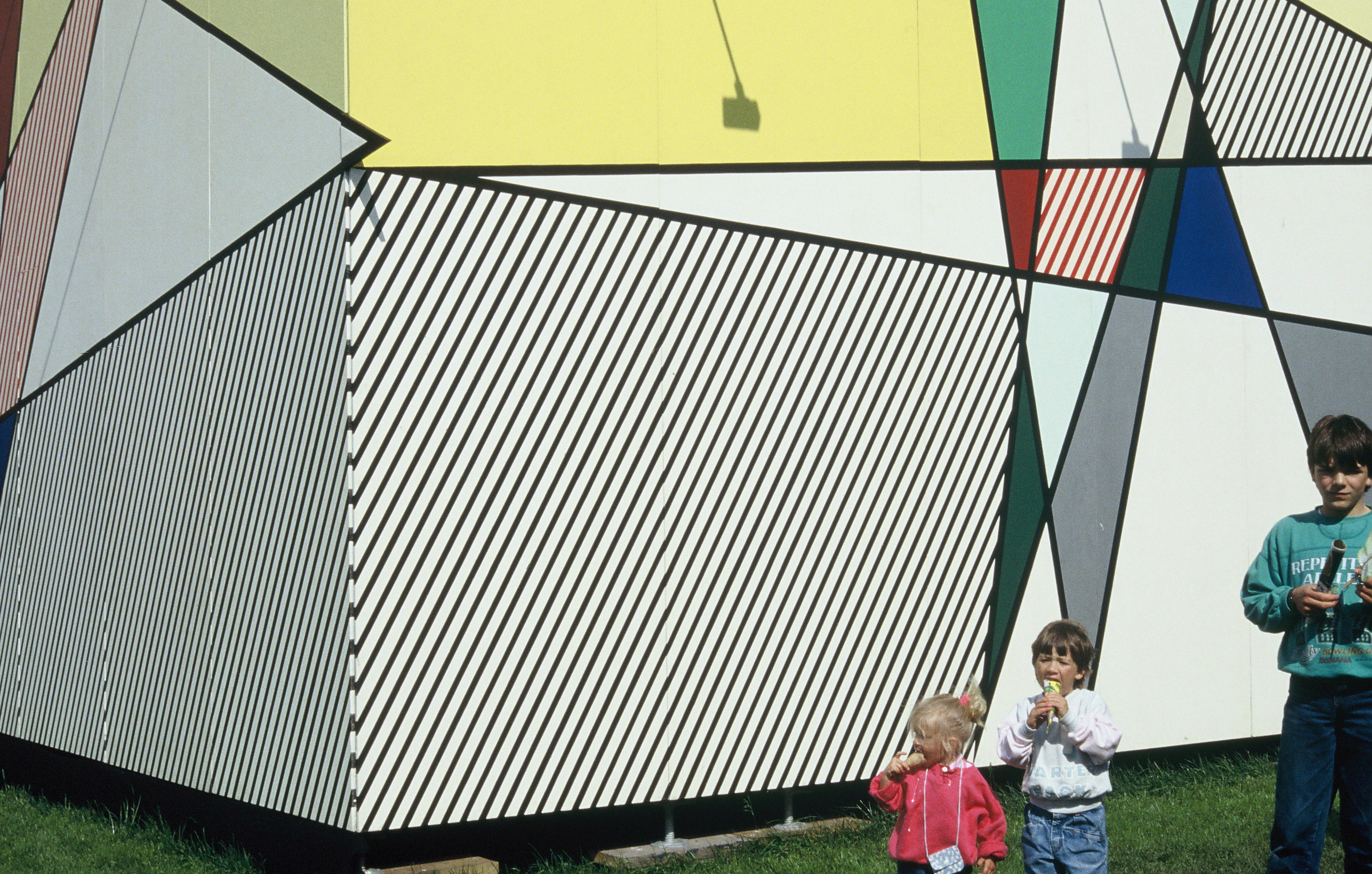
Fairground view: Roy Lichtenstein, Luna Luna Pavilion. Luna Luna, Hamburg, Germany, 1987.
For Luna Luna, Lichtenstein designed exterior panels for a labyrinth. These follow the rules of his 1985 Perfect/Imperfect series and showcase his tongue-in-cheek approach to abstraction.

